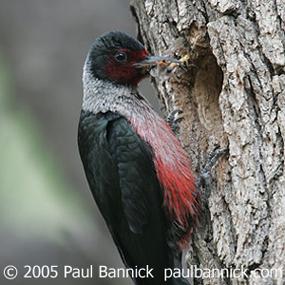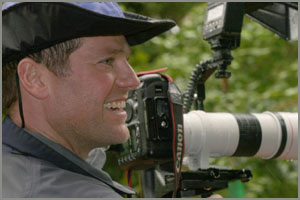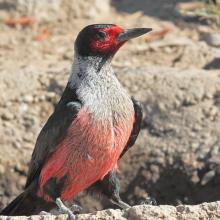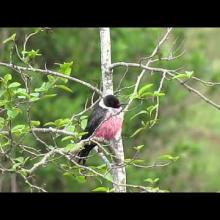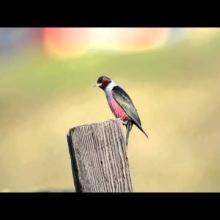

Join BirdNote tomorrow, November 30th!
Illustrator David Sibley and actor H. Jon Benjamin will face off in the bird illustration battle of the century during BirdNote's Year-end Celebration and Auction!
Among the marvels that Meriwether Lewis described was a bird that would later bear his name: Lewis's Woodpecker. Unlike most woodpeckers that spend most of their time with their bellies pressed against a tree trunk, Lewis's Woodpecker is an aerial artist. These woodpeckers get most of their food in spring and summer by fly-catching. Learn more at Cornell's AllAboutBirds.
Many of BirdNote's shows are made possible by the Icicle Fund. We thank them!
BirdNote®
Lewis’s Woodpecker: Jewel of a Namesake
by Bob Sundstrom
This is BirdNote!
[Typical scratchy notes of Lewis’s Woodpecker]
Among the marvels that Meriwether Lewis described, as he and William Clark explored westward in 1805, was a beautiful bird that would later bear his name: Lewis’s Woodpecker. Lewis first spotted the bird not far from present-day Helena, Montana, where the expedition would begin its difficult crossing of the Rockies. Let’s listen again…
[Call of the Lewis’s Woodpecker]
Lewis’s namesake is perhaps the most singular woodpecker in North America, in both appearance and habits. Picture a large woodpecker, with a black back glossed with green, a deep red face, gray collar and breast, and a rose-pink belly. A jewel of a bird.
And unlike most woodpeckers that seem to spend much of their time with their bellies pressed against a tree trunk, Lewis’s Woodpecker is an aerial artist. As ornithologist Ralph Hoffman wrote in the 1920s: “The Lewis’s Woodpecker is a skillful flycatcher, sallying out in any direction on set wings, turning and sailing back to its stub without a single stroke.”
Look for the lovely Lewis’s Woodpecker in Eastern Washington, in large stands of native oak, or along rivers near big snags of pine and cottonwood.
[Call of the Lewis’s Woodpecker]
Many of BirdNote's shows are made possible by the Icicle Fund, which supports fresh approaches to finding common ground between the needs of people and wildlife. [Alt. line: You may not be able to find a Lewis’s Woodpecker near you, but you can find others! Learn which you might see, at our website, BirdNote.org.]
For BirdNote, I’m Mary McCann.
###
Call of the Lewis’s Woodpecker provided by The Macaulay Library of Natural Sounds at the Cornell Lab of Ornithology, Ithaca, New York. Recorded by G.A. Keller
Ambient track recorded by C. Peterson
Producer: John Kessler
Executive Producer: Chris Peterson
© 2010 Tune In to Nature.org October 2010
ID#100605LEWOKPLU LEWO-01b

